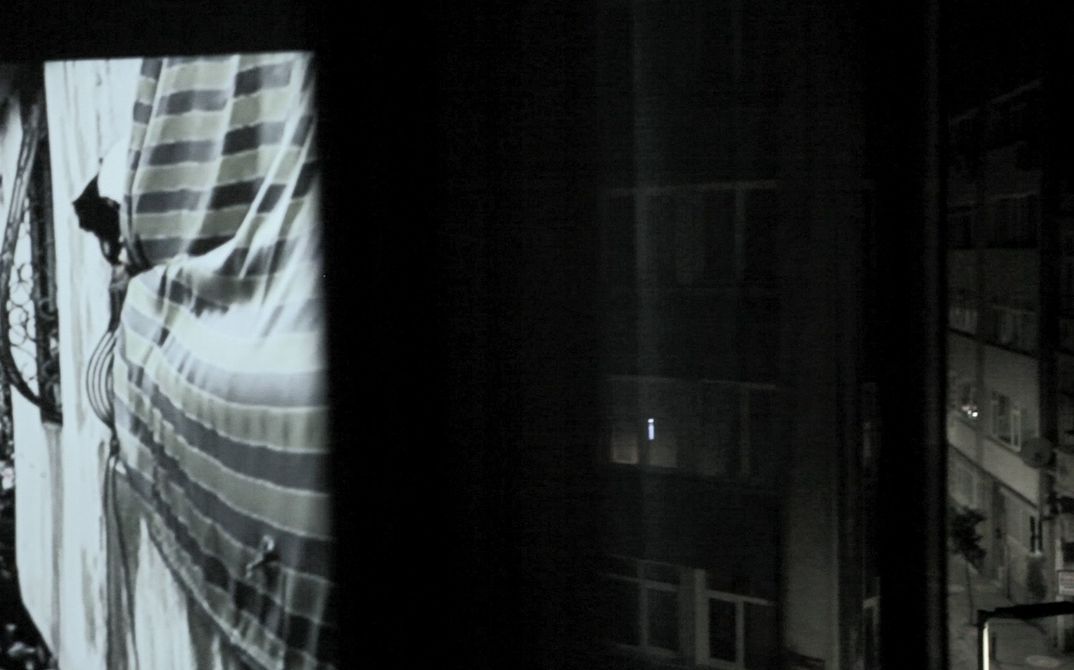In Beirut, Abdelwahed met a photographer from a small town that had been the site of fierce battles. It is then he decided to make a film about these images and their makers, to sound out the intriguing bond between ‘truth’ and its ‘image’ – as if to unlock their spell. And that’s how JELLYFISH, his feature-length came to be. “My set-up had to be simple and rigorous”, he explained, “I sat in a darkened room with a camera, my ‘protagonist’, his/her images projected on a blank wall and asked questions. I chose four people who were active in that same small town. They were surprisingly uninhibited in disclosing and reflecting on their approach and motivations and very generous in sharing all their images.” The four protagonists embody the different ‘devolutionary’ stages of the political crisis, from non-violent insurrection to outright war, a structure inherent to the transformation of content and role of the images. He filmed the protagonists where they had fled to, in Beirut, Istanbul and Paris, systematically replicating the same set-up. “The only thing that changed in every city is what the window in the room faced”, he commented. As he filmed and listened to their stories, the spell was unlocked, but his “position” was increasingly unsettling, in his words: “I was lodged between the images projected on the wall and the window on to the outside world. The images had lost their evocative, emotional power over me.” Would Syrians have been better off without all these thousands of images circulating across media and social networks? “Absolutely not. The images come from a necessity, their motivations and uses are able to be diverse, multiple and part of the conflict. This is what I wanted to unearth in the film, what is outside the frame and behind the image. For instance, one of my protagonists who had been detained in the regime’s jails went after his release to a small town controlled by anti-regime forces and started to photograph and to film. Soon, he found himself taking photographs of a jail and its detainees, representing a ‘familiar’ experience he had endured from the point of view of the victims, but was now accessible to him from with the point of view of the tormentors/fighters.”
Why JELLYFISH? Abdelwaheed sighed with sadness, “I read the story of a mother and her three daughters who had taken a boat to Italy seeking asylum in Europe. The boat capsized, the three daughters drowned but the mother survived. The newspaper story noted there were no images of the fatal accident. At that time, I was feeling drowned in images, and I could no longer see. The story moved me deeply. I began to wonder what might have been the most beautiful thing the daughters could have seen as they were drowning in the Mediterranean? A jellyfish perhaps, no doubt. They are actually quite beautiful. Those drowning girls had given me back my sight, the film is also my debt of gratitude to them.”
